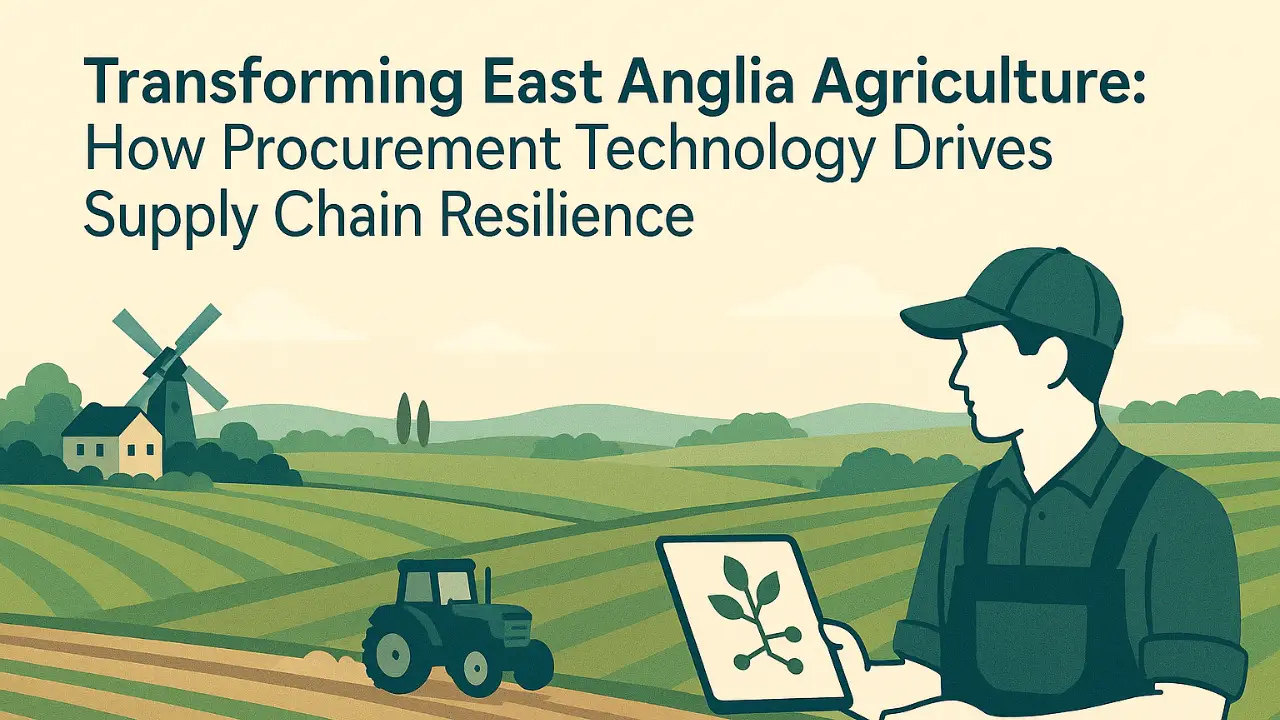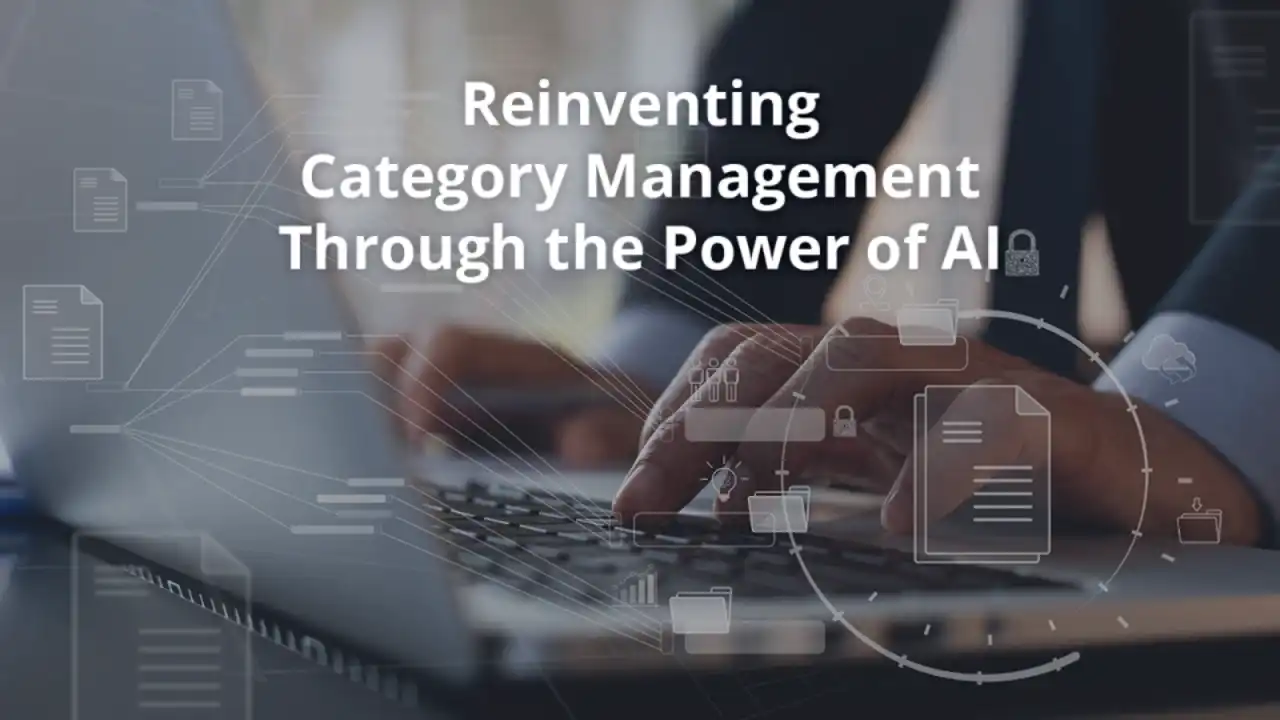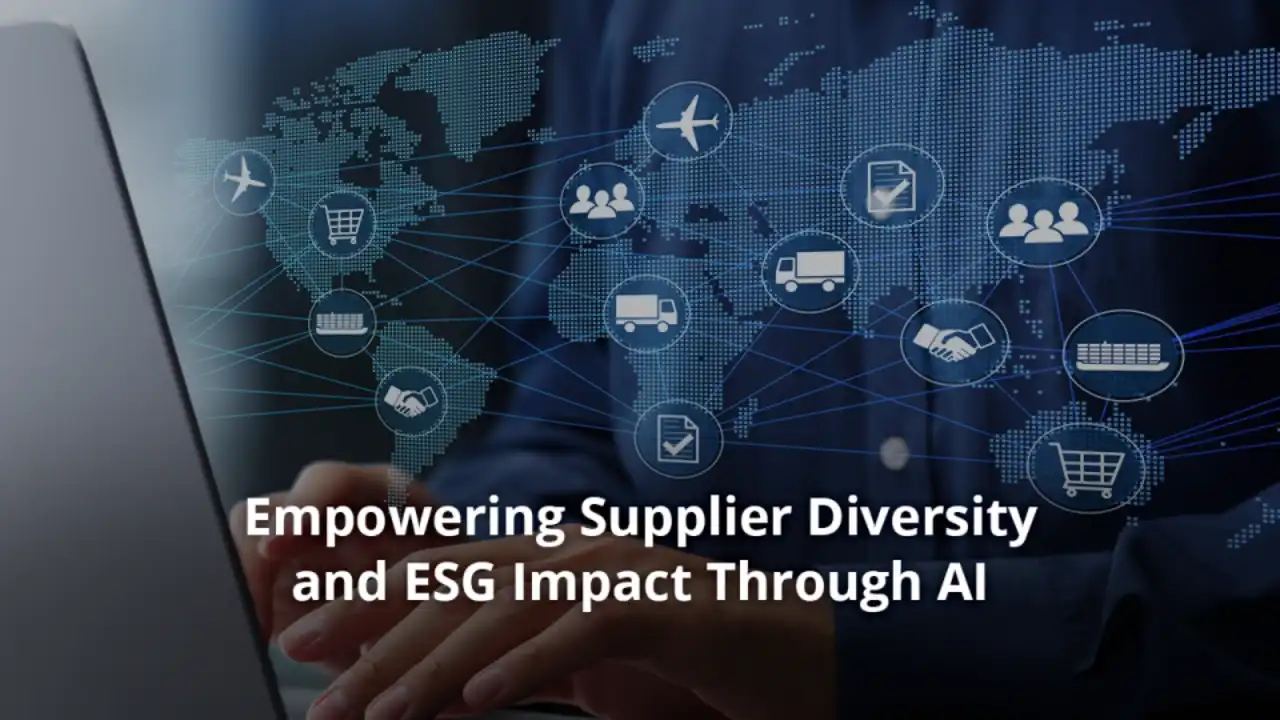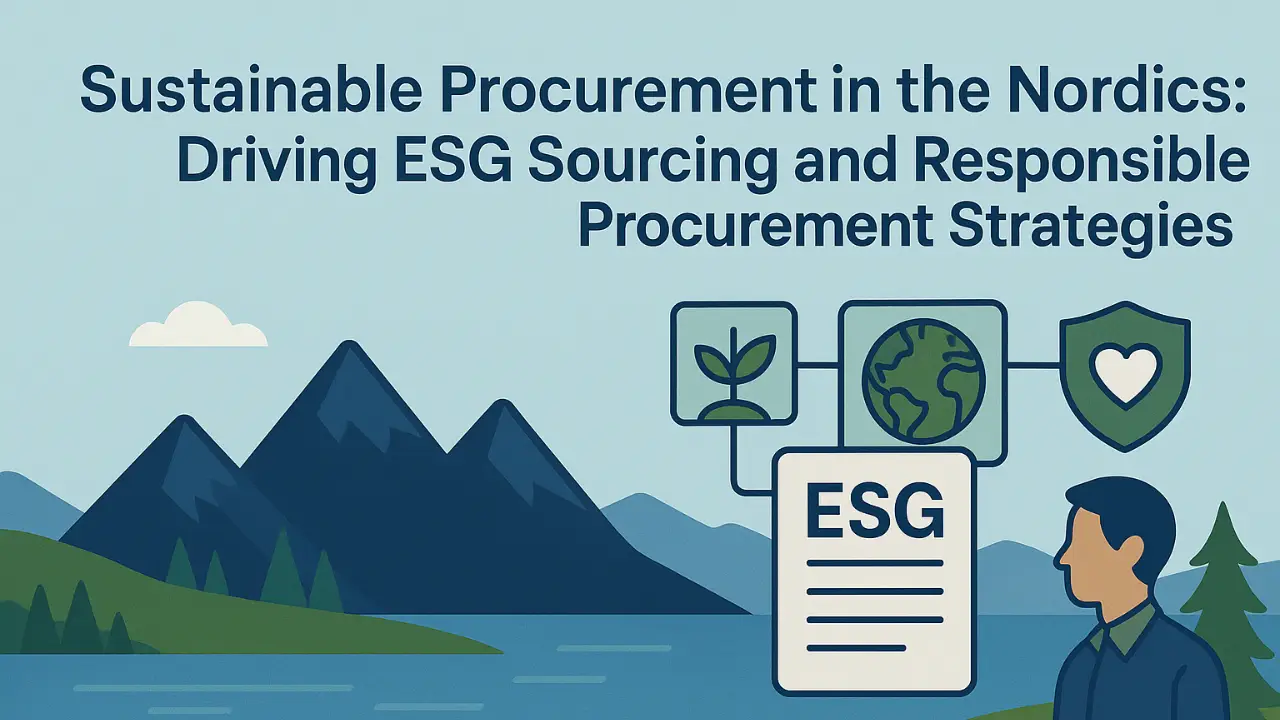TL;DR
- East Anglia agriculture procurement is under pressure from climate volatility, labor shortages, transport delays, and rising input costs.
- Procurement technology strengthens East Anglia agriculture by improving visibility with real-time dashboards, traceability, and compliance automation.
- AI-driven supplier diversification helps farmers reduce risk, avoid over-reliance on single suppliers, and build more resilient supply chains.
- Digital Source-to-Pay (S2P) systems cut costs, prevent maverick spend, enforce compliance, and speed up procurement cycles for perishable goods.
- Measuring impact with KPIs such as supplier scorecards, ROI tracking, and ESG metrics drives continuous improvement and sustainability.
- Zycus Merlin AI equips East Anglia farmers with predictive analytics, scenario planning, and end-to-end procurement orchestration.
Key Challenges in East Anglia Agriculture Procurement 2023
Hey there! If you’re involved in East Anglia’s agricultural sector, you’re probably feeling the squeeze from multiple directions these days. Let’s talk about what’s happening on the ground.
East Anglia is the agricultural heartland of the United Kingdom. Its fertile fields supply much of the nation’s wheat, potatoes, vegetables, and sugar beet, making the region absolutely crucial for both local and national food security.
But here’s the thing—agricultural supply chains here are incredibly complex, aren’t they? From planting to harvesting, processing, packaging, and distribution, each step depends on the one before it. This interdependence makes the entire system particularly vulnerable to disruptions.
So what’s making things harder lately? According to the National Farmers Union’s latest report, it’s a perfect storm of challenges.
Procurement technology offers a powerful way to manage these risks by revolutionizing how agricultural businesses source, buy, and track the goods and services they rely on. Understanding these challenges is the first step to building more resilient supply chains.
Current Supply Chain Risks in East Anglia Agriculture
East Anglia’s agricultural supply chains face several major risks that can disrupt the flow of goods from farms to consumers. Weather volatility creates the most immediate challenges. Sudden changes in rainfall, temperature, and storms affect when crops are planted and harvested. This makes it difficult for buyers and suppliers to forecast quantities and delivery times.
Labour shortages add another layer of complexity. Since Brexit, fewer seasonal workers are available for planting and harvesting. This creates gaps in the workforce during critical periods, which can delay fieldwork and reduce the amount of produce reaching processors and markets.
Transport bottlenecks present ongoing challenges too. Much of East Anglia’s agricultural output moves through key transport corridors, including roads leading to major ports. Disruptions from roadworks, strikes, or customs delays can slow exports and imports, causing perishable goods to spoil.
As the Food and Drink Federation’s Q4 2023 State of Industry Report highlights, input cost spikes are creating budget pressures across the supply chain:
- Fertiliser prices: Global events cause fertiliser costs to fluctuate unpredictably
- Packaging materials: Supply chain disruptions drive up packaging costs
- Energy costs: Rising fuel prices affect transport and storage expenses
How Procurement Technology Builds Visibility and Traceability
Procurement technology refers to digital platforms that automate activities like sourcing goods, purchasing materials, and managing supplier relationships. These systems make the entire procurement process more transparent by tracking every step and providing clear records.
Real-time inventory dashboards show live data about stock levels across different warehouses, farms, or distribution centers. This data updates automatically as products are received, used, or shipped. Agricultural businesses can see how much product is available at each location, which helps plan for upcoming demand and prevents over-ordering.
Lot-level traceability tracks products at the batch level as they move from farms through processors and into retail stores. Each lot gets assigned a unique code that connects it to its origin, processing steps, and distribution path. If a safety or quality issue occurs, businesses can trace affected lots back to their source and remove them from distribution quickly.
Our guide to supply chain and procurement orchestration explains how automated compliance systems record every transaction, approval, and change in the supply chain. These audit trails help ensure that procurement processes follow government regulations and industry standards. By automating record-keeping, these systems reduce manual paperwork and make it easier to review or verify compliance when needed.
AI in Procurement: Supplier Diversification for East Anglia Agriculture
Artificial intelligence in procurement uses data and algorithms to help organizations work with multiple suppliers instead of relying on just one. This process, called supplier diversification, reduces the chances of supply chain disruption.
AI systems review information about suppliers, including their reliability, past performance, and how they respond to different risks. Machine learning processes this information to help procurement teams identify which suppliers are most dependable and which combinations can help avoid shortages or delays.
Predictive risk scoring analyzes multiple data sources to estimate disruption likelihood:
- Weather data: Tracks forecasts to predict possible crop failures or transport delays
- Financial health: Monitors suppliers’ financial reports for signs of instability
- Geopolitical factors: Flags trade rule changes or conflicts that could disrupt shipments
AI also provides multi-sourcing recommendations by comparing suppliers based on geographic location, production capacity, and quality certifications. The systems consider supplier performance, delivery times, and compliance with standards to generate lists of potential backup suppliers who can meet specific requirements.
Our approach to building resilient supplier networks includes scenario planning tools that simulate different disruption scenarios, such as floods, strikes, or sudden demand increases. For each scenario, AI recommends backup sourcing plans, like switching to alternative suppliers or adjusting order quantities.
Source-to-Pay Systems Driving Cost Efficiency in Agriculture Procurement
Source-to-Pay (S2P) is a digital approach that automates the full procurement process from identifying what to buy through paying suppliers. S2P covers sourcing, purchasing, contract management, and payment within a single digital platform.
These systems help control maverick spend, which refers to purchases made outside of agreed contracts or without going through approved suppliers. Digital S2P platforms guide users to select only approved suppliers for every transaction.
Key efficiency improvements include:
- Contract compliance: Platforms automatically direct users to preferred suppliers
- Spend visibility: All purchases are tracked in real time
- Policy enforcement: Approval steps are built into digital workflows
Faster cycle times benefit perishable goods procurement. S2P automation reduces manual steps, allowing orders to be created, approved, and sent to suppliers quickly. This minimizes the time between placing an order and receiving goods, which is crucial for maintaining quality of fresh produce.
Dynamic pricing features monitor market changes and supplier agreements. The platform adjusts contract terms and pricing automatically when seasonal or market-driven price changes occur.
Revised: Measuring Procurement Success and Driving Continuous Improvement
Return on investment (ROI) measurement helps agricultural businesses understand how their operations change after adopting procurement technology. This process uses specific key performance indicators to evaluate outcomes like cost reduction, supplier reliability, and environmental impact.
Savings realization compares costs before and after implementing procurement technology using a baseline amount spent before the technology was introduced. Hard savings include direct reductions in purchasing costs, while soft savings include benefits like reduced administrative effort or time saved through automation.
Supplier performance scorecards collect data about supplier activities, tracking metrics like on-time delivery, product quality, and service responsiveness. This information guides future purchasing decisions and helps improve supplier relationships over time.
Sustainability and ESG indicators measure broader procurement impact:
- Local sourcing percentage: Tracks goods purchased from regional suppliers
- Carbon emissions: Monitors transport-related environmental impact
- Ethical sourcing: Ensures compliance with social responsibility standards
Future Procurement Technologies Securing East Anglia’s Food Supply
Several emerging technologies are changing how agricultural supply chains operate. Blockchain technology creates secure, unchangeable records of transactions in a chain of data blocks. In agriculture, blockchain can track products from farm through processing and distribution to the final buyer, helping confirm product origin and reducing fraud risk.
Autonomous procurement agents are AI-powered software programs that collect information, analyze supplier options, and can make certain purchasing decisions without direct human control. These agents process large amounts of data quickly and can respond to changes in supply or demand, though they still require human supervision for complex decisions.
Climate-smart analytics use data and computer models to forecast how weather and environmental changes could affect agricultural supply chains. These systems collect information from satellites, weather stations, and historical records to predict risks like droughts, floods, or heatwaves.
Transforming East Anglia Agriculture Procurement with Zycus Merlin AI
Zycus Merlin AI is an artificial intelligence platform designed for agricultural procurement. This platform uses data and algorithms to automate tasks like sourcing suppliers, managing contracts, and tracking inventory. It analyzes information from weather reports, supplier records, and market prices to help agricultural businesses in East Anglia respond to local challenges.
Explore Zycus’ Procurement Software for Food & Beverage Industry
The platform uses predictive analytics to spot possible delays or shortages in the supply chain. Its system can recommend alternative suppliers based on location, capacity, and compliance with quality standards. Scenario modeling tools help users plan for events like transport disruptions or sudden input price changes.
The Source-to-Pay suite from Zycus connects every step of the procurement process through a single digital system. Users can access real-time dashboards with inventory and supplier performance data, while audit trails are created automatically to meet regulatory requirements and trace products from farm to market.
A hands-on demo of Zycus Merlin AI is available for agricultural procurement teams who want to explore the system’s features and understand its approach to solving supply chain challenges in East Anglia.
Ready to Transform Your Agricultural Supply Chain?
East Anglia’s agricultural businesses face unique challenges that require specialized solutions. At Zycus, we understand the specific needs of your region’s food supply chain and have developed AI-powered procurement tools designed to address your most pressing concerns.
Our team of agricultural procurement specialists can walk you through how Zycus Merlin AI can help you:
- Build resilience against weather volatility and labor shortages
- Gain complete visibility into your supply chain
- Reduce costs while improving supplier relationships
- Meet sustainability goals while maintaining profitability
Experience the difference that intelligent procurement technology can make for your agricultural business.
Request Your Personalized Demo Today
FAQs
Q1. How long does procurement technology implementation take for East Anglia farms?
Implementation can take a few months for basic digital systems or over a year for full Source-to-Pay suites. The timeline depends on business complexity and how much integration with existing farm management systems is required.
Q2. Who owns the data generated by agricultural procurement platforms?
The agricultural business using the procurement platform owns and controls all data it generates. Technology providers act as data processors and maintain data security through strict confidentiality agreements.
Q3. What budget ranges exist for procurement technology in East Anglia agriculture?
Costs vary from lower-priced cloud-based subscription services for smaller operations to higher investments for large-scale enterprise solutions. Budget requirements depend on business size and system complexity.
Related Reads:
- Success Story: European Hotel Group Experiences Increased Productivity Through A Stable And Scalable Zycus P2P Solution
- Watch Video: Driving procurement resilience amidst economic downturn & uncertainty: A European Perspective
- Research Report: Ten Megatrends and insights for the European CPOs
- Source-to-pay vs Procure-to-pay: A Guide
- How S2P Applications Supercharge Your Bottom Line
- Source To Pay Optimization in Procurement: Benefits and Best Practices
- Your Guide to Source-to-Pay
- You Can’t Miss these 7 European Procurement Best Practices































































